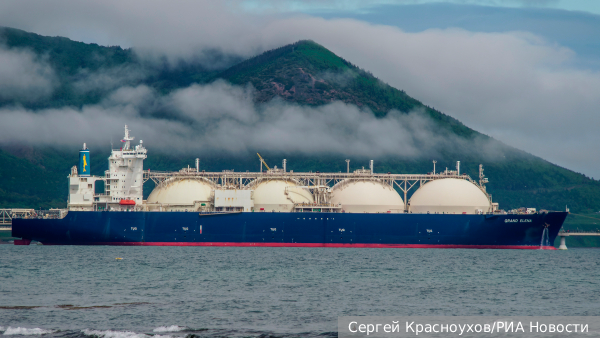
LNG largest buyer has changed
By Rhod Mackenzie
Despite mild weather and increased wind generation in Europe, gas prices did not decrease further in the region. On Friday, February 2, exchange prices for gas in Europe increased by 1.5% to $329 per thousand cubic meters, according to data from the London ICE exchange.
According to RIA Novosti, trading for March (nearest) futures on the TTF index, Europe's largest hub located in the Netherlands, opened on Monday at $320.8 (-1%). The minimum price was $317.1 (-2.1%), and the maximum was $330.5 (+2%). It is worth noting that during trading a week ago, these quotes fell below $300 per thousand cubic meters for the first time since July 28.
Last week, Europe experienced warming and increased winds. There has been a rise in wind turbine electricity generation. Last week, wind turbines provided 24% of the EU's energy balance in the first three days, compared to 14% the previous week, according to WindEurope.
However, gas prices remain unpredictable. The price fell during the cold spell and began to rise during the thaw, possibly due to the expectation of a new cold snap next week. This volatility continues to put pressure on European industry, despite signs of renewed activity reported by Bloomberg.
Gas consumption remains low, as key gas consumers, industrialists, are not yet ready to increase capacity. The recent record increases in energy prices have led to production cuts.
Despite a period of peak heating demand, weak demand from European industry has contributed to the fall in gas prices this winter.
The managing analyst of the PSB Analytics and Expertise Center, Ekaterina Krylova, notes that gas prices at the TTF hub have been rising recently due to an increase in gas withdrawal from underground gas storage facilities in Europe. The increased demand for gas in Europe in January was due to the uncharacteristic Arctic frosts.
The weather forecast for February suggests that cold weather will persist for a couple of weeks, which may also lead to an increase in selection. However, similar abnormal cold is not expected. Therefore, the expert expects the level of reserves to be around 50% by the end of the season.
She highlights that gas prices are increasing due to issues with LNG supply. Firstly, Qatari gas now takes a longer route through Africa instead of passing through the Suez Canal. Secondly, one of the liquefaction units at the Freeport export terminal in the United States is closed for a month for repairs, reducing gas supplies. Ekaterina Krylova predicts that gas prices will remain at $300-350/1 thousand cubic meters during February.
Last week, the price of European gas consolidated above the psychological level of $300 and is currently trading at $330 per 1 thousand cubic meters as of February 5th, according to Nikolai Pereslavsky, head of the 'Support' department of the CMS Group of Companies.
Pereslavsky notes that the downward trend shows no signs of reversal based on the price chart. The expert also points out that over the last 16 weeks of price decline (since October 2023), the growing correction did not last more than a week. Nikolai Pereslavsky suggests that the current week may be a turning point, and if the trend is positive, the gas price could rise to $390-400 in the medium term.
Meanwhile, China has regained its position as the world's largest LNG buyer.
Bloomberg reported that natural gas futures in the US rose 1% on Friday due to weather forecasts of an upcoming cold snap. They increased by about 8% last week. Natural gas for March delivery rose 1.4% to $2.079.
According to Reuters, the spot price for LNG supplied to northern Asia was $9.60 per 1 million British thermal units (MMBtu) for the week ending February 2. This is slightly higher than the previous week's seven-month low of $9.50.
The increase in winter imports to Asia was mainly driven by China, which regained its position as the world's largest buyer after Japan in 2023. LNG shipments to the country reached 8.14 million tonnes in December 2023 and 7.78 million tonnes in January 2024, representing a 12.1% and 28.2% increase, respectively.
According to Mikhail Zeltser, a stock market expert at BCS World of Investments, high volatility at gas hubs is common. Within a week, the price of gas at the European TTF broke through the $300 per thousand cubic meters mark and soared above $340. The increase was due to the aggravating factor in the Red Sea, where tankers carrying LNG are forced to bypass the Suez Canal amidst tough Middle Eastern geopolitics.
In general, the annual downward trend in prices persists, and blue fuel quotes remain two times lower than last year. At the American HH hub, NG futures hit their annual minimum at 2.02 mmbtu, a 40% drop from the 2024 high. The NG contract is a highly volatile exchange instrument, with historical turbulence off the charts. While it is too early to predict an upward reversal, the oversold status is significant. Therefore, a speculative rebound up to $2.5 in February would not be surprising. Russian active traders can also trade NG through Moscow futures, but it is important to remember to use protective stop orders and be aware of the risks involved. Mikhail Zeltser emphasised the importance of risk management.
